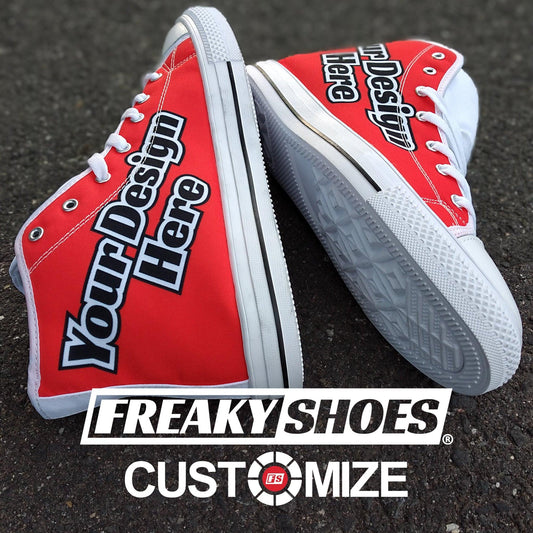Dried acrylic paint on shoes feels like a total nightmare, right? We’ve been there—and that paint doesn’t budge no matter how hard you scrub. The worst part is that it ruins the look of the shoes.
But here’s the good news: liquids that can remove dried acrylic paint from shoes actually exist, and we’ve tested them all. Remember this:
-
Use rubbing alcohol for canvas or rubber shoes.
-
Acetone works for rubber soles.
-
Vinegar is best for delicate shoes.
-
Soapy water helps with fresh paint.
-
Use paint remover for stubborn stains.
In this guide, you’ll get real tips, easy-to-follow steps, and our honest experience. We’ll show you how to get rid of dried paint without damaging your shoes—and even better, how to prevent future stains before they happen.
Let’s get started.
Key Takeaways
-
Rubbing alcohol softens dried paint and works well on canvas and rubber shoes.
-
Acetone removes stubborn paint quickly but can damage synthetic materials.
-
White vinegar is safe for delicate shoes and loosens dried paint naturally.
-
Soapy water helps with fresh paint and is safe for all shoe types.
-
Commercial paint removers are powerful and best for tough, stuck-on paint.
-
Always act fast, as the longer paint sits, the harder it is to remove.
5 Liquids That Can Remove Dried Acrylic Paint from Shoes and Surfaces

We’ve tested different liquids ourselves, and some really work while others are a total waste of time. Here are the five liquids we trust for removing dried acrylic paint from shoes:
|
Liquid |
Best For |
Strength Level |
Safe for Delicate Shoes? |
|
Rubbing Alcohol |
Canvas shoes, rubber soles, plastic, wood |
Moderate |
Yes, if not overused |
|
Acetone |
Rubber soles, glass, metal |
Strong |
No |
|
White Vinegar |
Fabric shoes, leather, soft materials |
Mild |
Yes |
|
Soapy Water |
Early-stage paint on all shoe types |
Very Mild |
Yes |
|
Paint Removers |
Stubborn dried paint on any surface |
Very Strong |
Depends on product – test first |
Rubbing Alcohol Removes Dried Acrylic Paint from Shoes Easily
Rubbing alcohol breaks down the hardened surface of dried acrylic paint, making it easier to scrub off shoes and surfaces without damage. It works by softening the plastic-like layer the paint forms when it dries.
The best part? This liquid is gentle, affordable, and easy to find, which makes it a top choice for paint removal.
Best for:
-
Canvas shoes
-
Rubber soles
-
Plastic, glass, and wood surfaces
How to use rubbing alcohol to remove dried acrylic paint:
-
Soak a cotton ball or soft cloth in rubbing alcohol.
-
Press it on the dried paint for 3 to 5 minutes.
-
Scrub gently with a toothbrush or cloth.
-
Repeat the process if paint remains.
-
Clean the area with water and let it dry.
We’ve used this method on canvas sneakers covered in paint splatter. The paint came off in layers, and the shoes were saved. On plastic, it worked just as well.
One tip: test a small area first if the surface is colored, because rubbing alcohol can fade certain fabrics if left too long.
Acetone Dissolves Dried Acrylic Paint Fast
Acetone, found in nail polish remover, dissolves dried acrylic paint quickly. It’s a strong solvent that breaks down the paint at a chemical level, making it easy to wipe away.
However, use with caution, as acetone can damage soft or synthetic materials.
Best for:
-
Rubber soles
-
Glass surfaces
-
Metal surfaces
Not safe for faux leather or delicate shoe materials.
How to use acetone to remove dried acrylic paint:
-
Dip a cloth or cotton swab into acetone.
-
Dab it on the dried paint spot.
-
Let it sit for 1 to 2 minutes only.
-
Wipe or scrub the paint off gently.
-
Rinse with water and allow the area to dry.
White Vinegar Loosens Dried Acrylic Paint Without Damaging Shoes
White vinegar helps remove dried acrylic paint by softening the paint, making it easier to scrub off gently. It works because it’s a mild acid. That means it can break down the paint’s hold on the surface, but it’s not strong enough to harm your shoes.
That’s why we often use it when we’re worried about damaging the material.
We’ve used vinegar on fabric shoes, and even leather, and it didn’t ruin the material at all. One time, after a paint spill during a DIY project, we got dried acrylic paint on a pair of white fabric sneakers. We didn’t want to use anything harsh, so we gave vinegar a try.
Vinegar doesn’t act as fast as something like acetone, but it’s much safer. And the smell? Sure, it’s strong at first, but it fades quickly, especially after you rinse the area.
Plus, vinegar is cheap and easy to find.
How to use white vinegar to remove dried acrylic paint:
-
Warm up some white vinegar. It should be warm to the touch but not boiling.
-
Soak a clean cloth in the warm vinegar.
-
Press the cloth onto the dried paint. Let it sit there for about 10 to 15 minutes.
-
After soaking, scrub the spot gently with a toothbrush or soft cloth.
-
Rinse the area with clean water and let the shoe dry naturally.
Soapy Water Can Remove Lightly Dried Acrylic Paint from Shoes
Soapy water helps soften acrylic paint that hasn’t dried completely. It’s the gentlest method, so it won’t harm your shoes at all. This method works best if the paint is only slightly dry or still a bit soft. If the paint is rock hard, soapy water won’t be strong enough on its own.
We’ve used this on fresh paint spots more than once. After a painting session, one of us stepped in some paint by accident. The paint was starting to dry, but not fully cured. We mixed warm water with dish soap and got to work.
This method takes patience. It’s not fast, and it needs effort, but the good thing is, it won’t damage any type of shoe.
How to use soapy water to remove dried acrylic paint:
-
Fill a bowl with warm water and add a few drops of dish soap.
-
Soak a cloth or sponge in the soapy water.
-
Place the wet cloth on the dried paint and leave it for about 10 minutes.
-
Scrub the spot firmly with a brush or cloth.
-
Rinse the shoe with clean water and let it dry.
Commercial Paint Removers Work Best for Stubborn Dried Acrylic Paint
Commercial paint removers are designed to break down dried acrylic paint quickly, even on tough spots. These products are made specifically for paint removal, so they’re stronger than household liquids like vinegar or soapy water.
But the key is using the right one for your type of shoe or surface.
When we used this on our sneakers, we didn’t even have to scrub much. The paint just started lifting after sitting for five minutes. For really stubborn paint or thick layers, this is the most effective option. It costs more than home remedies, but if the paint won’t budge, it’s totally worth it.
The good part about commercial removers is speed. You don’t have to scrub for hours. But we always test a small spot first, especially on colored shoes or delicate fabrics.
How to use commercial paint remover to remove dried acrylic paint:
-
Read the product label carefully to make sure it’s safe for your surface.
-
Apply the remover to the dried paint using a cloth or applicator.
-
Let it sit for the amount of time recommended—usually a few minutes.
-
Wipe or gently scrub off the softened paint with a cloth or brush.
-
Clean the area with water and allow it to air dry.
If you're into painting shoes or canvas, you might also wonder, can you use watercolor on a normal canvas, or is it better suited for something else? Knowing the right materials helps avoid messes—and makes cleanup easier too.
When Should You Remove Dried Acrylic Paint from Shoes?
You should remove dried acrylic paint from shoes as soon as you notice it, before it becomes harder to clean and possibly damages the material. The longer paint stays on, the more it bonds with the surface.
Early removal protects the shoe and makes cleanup easier. Ignoring it can lead to permanent stains or damage, especially on fabric or leather.
How to Prevent Acrylic Paint Stains on Shoes

Preventing acrylic paint stains is much easier than cleaning them. Simple steps like covering your shoes, staying aware of your surroundings, and using protective sprays can save you time and effort later. We’ve made mistakes in the past, and now we always take a few precautions before starting any paint work.
Wear Old Shoes or Shoe Covers When Painting
This might sound basic, but it works. We always keep an old pair of shoes just for messy jobs like painting. These are shoes we don’t care about, so if paint gets on them, it’s no big deal. It’s a simple trick, but it has saved our good shoes many times.
Another option is using disposable shoe covers. These are cheap, light, and you can toss them after use. We’ve used them when painting indoors, and they kept our shoes spotless. It takes just a few seconds to slip them on, and it saves hours of cleaning later.
Set Up a Paint-Proof Work Area
Before starting any painting, we always set up the area properly. That means laying down plastic sheets or old cloths to catch any spills. We’ve found that being careful with setup reduces accidents. It also helps to keep shoes and anything else valuable away from the area.
One time, we didn’t prep the area and ended up stepping in paint that dripped on the floor. Since then, we make sure the workspace is covered and safe. This habit has saved not just shoes, but furniture and floors too.
Stay Aware of Your Movements While Painting
It’s easy to get caught up in the work and not realize where you’re stepping. We’ve had paint get on shoes just because we moved without looking. Now, we always take a second to check where we’re walking during painting projects.
Sometimes, stepping back to admire your work means stepping into paint. We learned this the hard way. Staying aware can prevent that. Even placing a small mat to wipe your feet before stepping away from the work area helps a lot.
Use Protective Sprays on Shoes Before Painting
There are sprays made to protect shoes from stains and water. We started using these before painting, especially on fabric shoes. These sprays add a layer that helps keep paint from soaking in deeply.
One spray we used made it easier to wipe paint off when an accident happened. The paint didn’t bond with the fabric as much. It still took effort to clean, but the stain didn’t stick. Spraying shoes before messy work is now part of our routine.
Keep Cleaning Supplies Ready Just in Case
Accidents happen, no matter how careful you are. That’s why we keep basic cleaning stuff nearby when painting—like paper towels, cloths, rubbing alcohol, and soap. When paint spills, acting fast makes all the difference.
One time, paint splashed on shoes, and we cleaned it right away with just a damp cloth. If we had waited, it would’ve dried and been harder to remove. Having cleaning tools ready helps you deal with small spills before they become big problems.
Final Words
Dealing with dried acrylic paint on shoes can feel overwhelming, but the right liquid makes all the difference. We’ve tried, tested, and found what works best—and what doesn’t. The sooner you act, the better your results will be.
Here’s a quick recap to help you out:
-
Rubbing alcohol is safe and effective for everyday shoe materials.
-
Acetone works fast but needs caution—test before use.
-
Vinegar and soap are gentle options for early or light stains.
-
Commercial removers are your best bet for stubborn, old paint.
-
Prevention is key—protect your shoes before paint touches them.
Don’t stress—your shoes can be saved. Try these easy fixes and get them looking clean and fresh again!


















